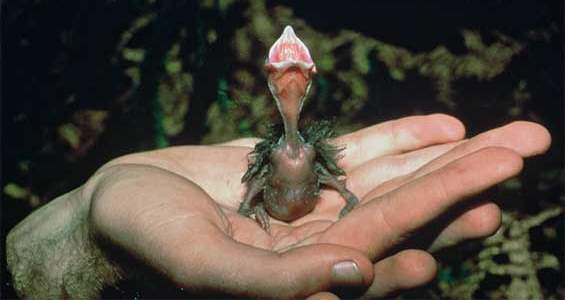
Introduction
The kōkako belongs to the endemic New Zealand wattlebirds, an ancient family of birds which includes the North and South Island saddleback and the extinct huia.New Zealand status: Endemic
Conservation status: North Island kōkako: Nationally Increasing, South Island kōkako: Data deficient
Population: North Island kōkako 2,300 pairs
Found in: North Island native forests
Threats: Predation, competition for food
Sound recordings:
Kōkako song (MP3, 1,793K)
01:53 – Kōkako song.
Kōkako alarm call (MP3, 1,266K)
01:21 – Kōkako song, alarm call in response to playback of recorded distress call.
Species information: Kōkako on NZ Birds Online
Image gallery
Kōkako conservation
Emergency hotline
Call 0800 DOC HOT (0800 362 468) immediately if you see anyone catching, harming or killing native wildlife.
Decline and predation
In the early 1900s the kōkako was common in forests throughout New Zealand.
South Island kōkako are now assumed to be extinct. However it's remotely possible they may survive in low numbers in remote parts of the South Island and Stewart Island. Currently there are no confirmed reports of surviving South Island kōkako.
For the North Island kōkako, there has been a significant decline over the last 20 years. Management is reversing that trend in many areas to the point that the kokako has been reclassified from Threatened to At Risk: Recovering.
Predation at nests – mainly by ship rats and possums, and occasionally stoats – is the primary cause of North Island kōkako declines. Female kōkako are particularly at risk of predation as they do all the incubation and brooding throughout a 50-day nesting period. Years of such predation have resulted in populations that are predominantly male and with consequent low productivity rates.

Four day old North Island kōkako chick
Kōkako project in the Hunua Ranges
In the mid 1990s DOC and the Auckland Regional Council started a joint project to protect the population of 21 North Island kōkako in the Hunua Ranges.
In 1994 the only remaining breeding female in Hunua fledged 3 chicks, heralding a new era of recovery. The population has grown slowly with the protection of nests from predators and close monitoring of nesting birds.
This population has also been helped by translocating kōkako from elsewhere (Mapara, Pureora, Tiritiri Matangi) to boost the population numbers and genetic diversity. A census in 2015 found 55 kokako pairs!
Recovery plan
DOC's third North Island Kōkako Recovery Plan emphasises management of the species on the New Zealand mainland.
Ongoing effective predator control, genetic management, and improving the habitat quality of existing populations and restoration of kōkako to parts of their former range are key features of this plan.
North Island kōkako recovery plan 1999-2009 (PDF, 2,196K)
Research by management
Our research focuses on increasing knowledge of the species to improve management efficiency to ensure long-term kōkako survival.
The 'research by management' programme which compared kōkako survival and productivity in three central North Island forests, has demonstrated that intensive management of introduced mammals can result in rapid expansion of kōkako populations.
At Mapara reserve in the King Country the total population more than doubled in seven years between 1992–1999. More importantly, the female population increased at least nine times over the same period. A 2013 survey estimated the population at Mapara to be 123 pairs.
Similar techniques have been applied to locally threatened populations in Northland, Auckland, Waikato, East Coast and Bay of Plenty, where the birds are now increasing significantly.
Island populations
Did you know?
In Māori myth, the kōkako filled its wattles with water and brought it to Maui as he fought the sun.
Maui rewarded the bird by making its legs long and slender, enabling it to bound through the forest with ease.
A large, self-sustaining population established on Te Hauturu-ō-Toi/Little Barrier Island from translocations which took place during the early 1980s. This was used, together with kōkako from other locations, to create a new island population on Kapiti Island.
A survey in 2013 estimated 422 pairs on Little Barrier Island, and in 2016 there were an estimated >28 pairs on Kapiti Island.
A third island population begun on Tiritiri Matangi Island in the Hauraki Gulf during 1998. Tiritiri Matangi Island is holding kōkako of Taranaki lineage until a site at Taranaki is ready to receive them. In May 2017, kōkako of Taranaki lineage were returned to their ancestral home in Taranaki.
You can help
Community involvement is important for kōkako survival. The public have been involved with volunteered in survey, pest control, and monitoring work.
Community groups are involved mostly now with pest management to protect kōkako populations. Around half of existing kōkako sites are largely managed by community groups.